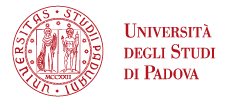PRIN 2022 / Bruschi

Acronimo: NEMESI
Titolo: 4D manufacturing based on 3D printing and machining for Nitinol biomedical and sensing applications
Coordinatore: prof.ssa Stefania BRUSCHI - Dipartimento di Ingegneria Industriale-Università degli Studi di PADOVA
Partner-Unità di ricerca: Università degli Studi di PALERMO
Bando: PRIN 2022 - Decreto Direttoriale n. 104 del 02-02-2022
Durata: 28/09/2023 - 27/09/2025 (24 mesi)
Budget totale progetto: € 239.797,00
Abstract del progetto
Nickel-titanium alloys, Nitinol in particular, are currently exploited for biomedical and sensing applications thanks to the unique characteristics they offer, such as shape memory effect, superelasticity behavior, biocompatibility, low stiffness, high fatigue and corrosion resistance. Manufacturing processes dedicated to the production of parts made of Nitinol must be capable to guarantee such characteristics for a part reliable service life. Nevertheless, it is a matter of fact that especially the shape memory and superelastic effects, which are both depending on the alloy transformation temperatures, can be significantly influenced by the manufacturing process chain, making the part suitable or not for the specific application.
In recent years, 3D printing techniques have been implemented to fabricate parts made of Nitinol, showing great potentialities mainly in terms of complexity-for-free, but usually neglecting those post-3D printing technologies (including machining steps) thatare often mandatory to assure the part final geometry and properties. In this context, the aim of the NEMESI project is to show the
feasibility of using process chains combining 3D printing and machining to control the physical and functional responses of the Nitinol alloy, with particular focus on its shape memory and superelastic effects.
The objective of the research is to fully exploit the concept of 4D printing, namely the change of the geometry and functional performances of a 3D printed part as a function of time, under the superimposition of either a mechanical load or thermal stimulus. However, a new paradigm will be here proposed that considers also the post-3D printing processing history, in a more general approach that can be defined as 4D manufacturing. Thanks to a precise control of the process parameters of both the 3D printing and machining steps, spatial and time-dependent responses can be achieved producing parts tailored to the specific application. This can open up new fields of applications as well as make more robust the existing ones.





